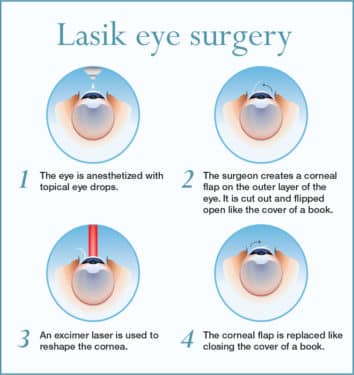Recognizing The Various Kinds Of Intraocular Lenses For Cataract Surgical Procedure

Content writer-Aagaard Berry
Throughout cataract surgical treatment, your all-natural lens is removed and changed with a synthetic lens. Your specialist will go over with you the various kinds of IOLs readily available to reduce or remove your requirement for glasses after surgery.
Typical IOLs have one focusing range and also are usually set for clear distance vision. click the up coming document , additionally called multifocal or accommodative lenses, have areas with different focusing staminas to allow you to see far and wide things without glasses.
Monofocal IOLs
Criterion monofocal lenses are utilized most regularly to deal with cataracts throughout a procedure called refractive lens exchange (also called clear lens exchange). The cataractous all-natural lens is changed with a synthetic one, causing enhanced vision.
These IOLs give clear vision at a single distance. They are typically readied to optimize your range vision, yet you will certainly still need reading glasses for close to things.
These lenses are made from an acrylic material that is versatile as well as collapsible. mouse click the up coming website permits your optometrist to put them right into the very same cut through which your natural lens was gotten rid of during surgery. Your ophthalmologist can discuss your IOL options with you as well as suggest the best strategy for your visual requirements.
Multifocal IOLs
These exceptional lenses give a variety of emphasis areas, removing the requirement for glasses to see up close, away or in between. This is attained through multiple particularly created concentrating powers or by fitting (altering shape) the lens. It may take a while for your mind to adapt to these lenses, however the vision they offer is well worth the effort!
These lenses are separated right into 2 primary categories based upon exactly how they bend light to produce multiple retinal images. They can be categorized as refractive multifocal and diffractive multifocal lenses.
Vision Correction Surgery have multiple curvatures to create "refractive areas" that bend light to generate several retinal photos with different dioptric powers. This permits a greater degree of picture quality without hing on the dimension of the student. Instances include the Tecnis Multifocal and also Panoptix.
Toric IOLs
In individuals with astigmatism, the curve of the cornea is slightly incomplete, so light entering the eye is not concentrated in one place on the retina. This leads to blurry vision. Throughout cataract surgery, toric IOLs are straightened so the lens's steepest part matches this curve as well as creates clear, sharp vision.
Toric IOLs are a fantastic option for people that need cataract surgery and wish to reduce their dependence on glasses or call lenses. Nevertheless, a toric IOL needs to be completely lined up for optimal aesthetic results. For every single 3 levels of misalignment, the IOL is 10% less effective.
To minimize the risk of postoperative IOL turning, the sensory viscoelastic gadget (OVD) need to be completely eliminated from the capsular bag before IOL insertion. During this action, the specialist needs to meticulously mark the steepest point of the cornea to aid guide the IOL's axis after it is implanted. This helps protect against the client from needing to go through surgical procedure once again to have the IOL re-aligned.
Extended Depth of Focus (EDOF) IOLs
A new modern technology has recently arised in the treatment of presbyopia called Extended Deepness of Emphasis (EDOF). These lenses make use of a single lengthened centerpiece to improve range of vision. The resulting lenses do not have the numerous points of emphasis of multifocal IOLs, which can trigger halos and glow for some people.
An excellent EDOF lens would provide a sharp emphasis over an array from plano to -1.50 D, allowing people to see near, intermediate, and distance things without glasses. The first EDOF IOL to be introduced was the diffractive style of the Tecnis Symfony IOL, which utilizes light-splitting rings to expand the range of vision. Nonetheless, this style can trigger a reduction on the other hand level of sensitivity that several individuals do not endure well.
A more recent non-diffractive EDOF IOL is the Vivity IOL, which incorporates aspheric optics with a pinhole design to raise deepness of focus. This layout lowers caused aberrations and also might result in much better contrast sensitivity, though it does not fully appropriate for astigmatism or allow for functional near vision.

